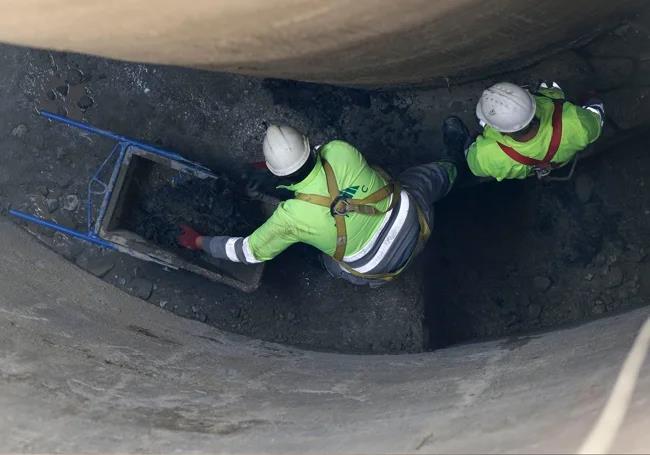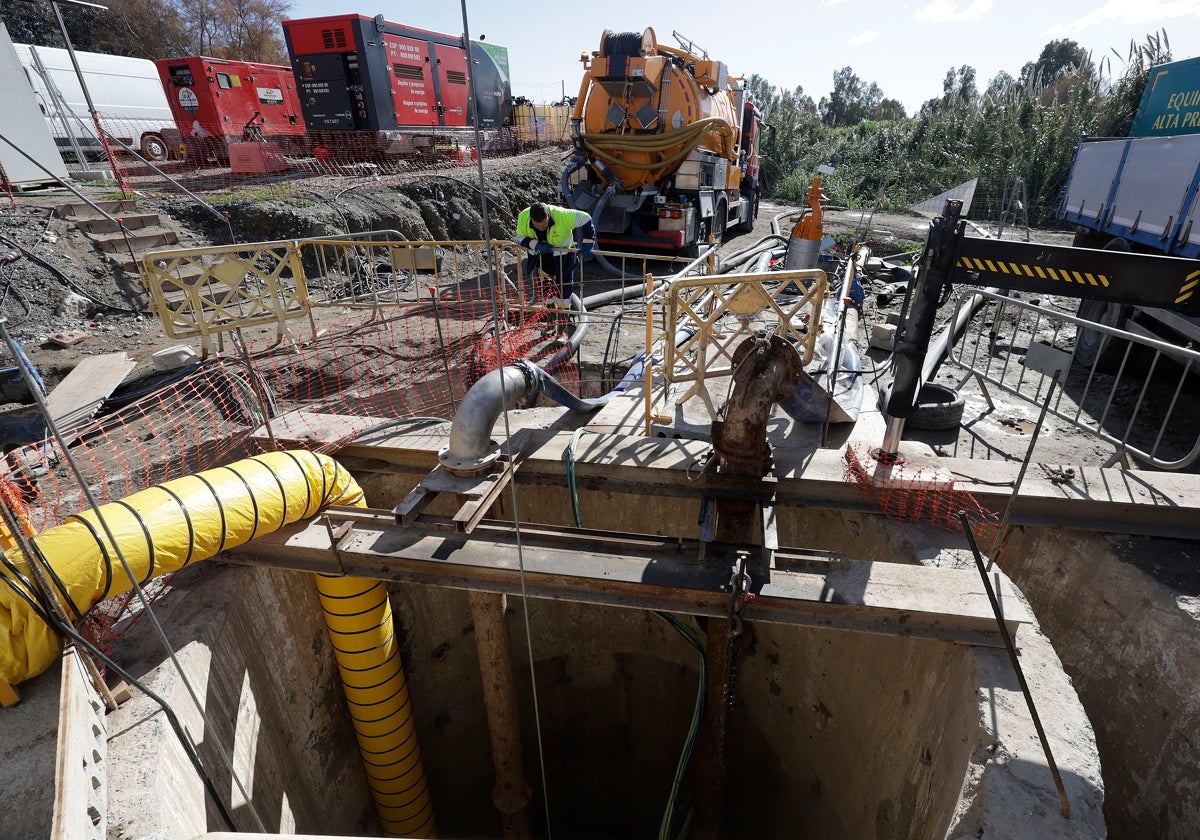Work to take advantage of huge underground water resource on outskirts of Malaga now 75% complete
The Junta de Andalucía and the local council are working on three fronts to exploit alternative supplies to keep the city supplied with mains water and they now have a connection date in mind
The drought has forced us to turn our attention to the long-neglected water resources that lie beneath the ground. It is time to look for alternatives to surface reservoirs. Andalucía's regional government and Malaga city council have been immersed in this race for capturing such groundwater for two years. First, they brought back into use the Aljaima and Fahala wells in Cártama. These two wells have been providing up to 20% of the water supply needed by the city in recent months. Then, both governing bodies set out to undertake an ambitious operation to recoup some very old wells in Bajo Guadalhorce that had been abandoned for decades.
A pleasant surprise has come about because the water flow measurements carried out have produced impressive readings: more than 900 litres per second with the city needing 1,500-1,600. The engineers themselves have a metaphor for this discovery: it is like having a large 'underground reservoir' between Malaga Airport and the Santa Teresa industrial estate. In this case, in a first phase, five wells will be set up to exploit this aquifer.
Most of the work, according to sources from the Junta's agriculture ministry, is already completed - currently at 75%. The hive of activity with personnel and machinery on site is unquestionable. Work is being carried out in both areas: Perales and Puente del Rey. At the same time progress is being made on the systems for extracting and transporting water to the drinking water treatment plant at El Atabal. The sources consulted estimate that connection to the mains network could take place in April provided all work is completed on schedule.

"Emasa [Malaga city's public water supply company] continues to work on the cleaning and recovery of the three groups of wells (Puente del Rey, Aljaima and Perales). The Junta is putting in the pipes that connect them and installing the equipment to be able to operate them," state municipal sources. The investment is 15 million euros, mainly provided by regional funds within the scope of the decrees made to ease the drought situation.
Of course, the wells cannot be operated at full capacity all the time. Moreover, there will always be incidences of wear and tear in their operation that will require downtime. The systems have to be reconditioned and allowed to recover as natural wells. This is already happening in the Fahala and Aljaima wells. Emasa is juggling with the flows and sources of water to be able to cross the two curves: supplying Malaga while trying not to deplete resources.

Be that as it may, right now the water consumed from the headwater reservoirs (Guadalhorce, Guadalteba and Conde) is more or less half of the city's supply. Two other resources on the rise are the Casasola reservoir (Almogía) and the water that is already flowing in the Guadalhorce river, but that has just arrived from the Río Grande in the Aljaima area and which is used in the weir used to divert water when needed.
900
litres per second could be provided by the wells of the Bajo Guadalhorce (Perales and Puente del Rey). Malaga city needs about 1,500.
The analyses carried out by Emasa in the Puente del Rey area to the north of Malaga Airport show good results for hardness (lime) and conductivity (salt). The water going to El Atabal is perfectly treatable.
Samples taken from well 1 in Puente del Rey determine that the water has a hardness level (lime content) of 66 French degrees (one French degree is equivalent to 10 milligrams per litre of calcium carbonate (lime)). Emasa's quality criterion for domestic supply is 11. To compare with other resources this is the same lime content as the water from the Aljaima and Fahala wells, which already account for 20% of the city's supply. It is somewhat harder than the water from the Guadalhorce reservoirs, which is between 35 and 40 French degrees.
1,500
µS/cm (microsiemens per centimetre) of conductivity (salt) is present in the samples from Puente del Rey 1. It is saline water but perfectly treatable in the desalination plant of El Atabal. The hardness of the water (lime) is 66 French degrees, another proportion that is perfectly acceptable to be handled by this desalination plant.
In terms of salinity (conductivity), the untreated water under the Guadalhorce gives 1,500 µS/cm, a moderately saline water but within sanitary standards. In addition, the desalination plant at El Atabal can treat water with up to six times that salinity. At El Atabal Emasa always extracts water below 600 units. These wells therefore have much lower salinity than the Guadalhorce, which, in times of drought, can exceed 4,000 units (the desalination plant would even be capable of desalinating up to 10,000).
60
metres is the depth of the wells being reconditioned such as Perales 3 on the Santa Teresa industrial estate.
The engineering system, imported directly from the United States and pioneered by Malaga in Spain, was used in the late 1960s to harness the water from this large 'underground reservoir'. This was the starting point in the history of these wells, which have also been extensively studied by the Hydrogeology Centre at the University of Malaga (UMA), headed by Professor Bartolomé Andreo, who has advised Emasa on this strategy to exploit this underground resource.
The boreholes are made using the Ranney method, which, to explain in lay terms, is a large vertical well in the form of a tube shaped like an inverted umbrella. The 'ribs' are the catchments that funnel water into the reservoir and the water is then pumped upwards under great pressure. Bear in mind that the water must rise vertically more than 60 metres. All the wells at Perales were built using the same system, but the most important one, Perales 3, shown in the photos illustrating this story, is a deep catchment point.

